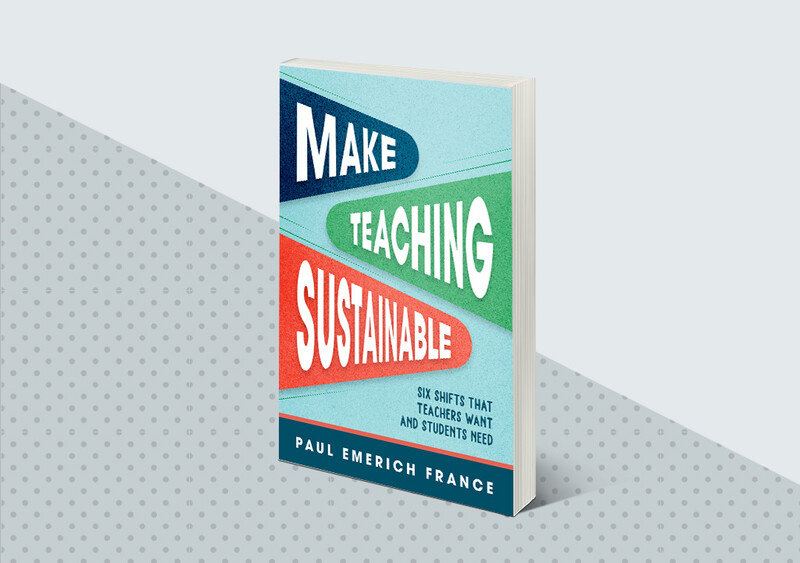Differentiating instruction can become laborious, especially if teachers believe it requires providing different students with different activities. The goal of differentiated instruction, however, isn’t variety; it’s to provide learners with equitable access to learning experiences. If the only way we differentiate is with a range of activities for different “levels” of learners, we not only create more work for ourselves, but we also further marginalize students by varying access to below-, on-, and above-grade-level activities.
To make differentiation sustainable and meet all learners’ needs, we need to use universal design (CAST, 2024), scaffold learner agency, and leverage assessment to help students make choices. When combined, these moves allow students to share in the energy demands of sustaining differentiated instruction, so teachers don’t have to do it alone.
Consider the following tools to help students become partners in differentiating their learning.
Tool 1: Learner-Friendly Assessment Tools
If we don’t know students’ gifts and challenges, it will be difficult to meet their needs. Learner-friendly rubrics that use developmentally appropriate language and visual aids allow students to be our assessment partners. I recommend teachers create rubrics for entire units of instruction, so they can refer to success criteria consistently over the course of a unit and apply it to various assignments.
Rubrics also provide clarity for students, increasing the likelihood that they will internalize success criteria and use it to initiate improvements to their work (Almarode & Vandas, 2018). The example in Figure 1 shows how a student rated their informational writing assessment about pollinators. After conferencing with me, the student realized they needed to strengthen “elaboration.” In the open response, they laid out next steps: “I can use at least three pollination words,” the student reflected. “I need to describe how bees move pollen.”
Tool 2: Open-Ended Tasks
Open-ended tasks manifest all three elements of universal design, allowing for multiple means of engagement, representation, and expression (CAST, 2024). They allow students to grapple with uncertainty and ambiguity, providing various pathways, methods, or solutions to a problem.
For instance, in response to the open-ended math task in Figure 2, some students might use concrete manipulatives (e.g., fraction tiles) to compare the fractions, while others may draw a visual model (e.g., fraction bars) or use logic to determine who ate the most candy. The latter (logic) is the ultimate goal; students will understand that a smaller denominator indicates larger pieces. Notice how we achieve sustainable differentiation: not through different tasks at different levels but instead through varied access points.
Tool 3: Learning Journals
Integrating open-ended tasks into the curriculum is no simple feat. We must teach students how to interact with them. One of my favorite ways to do this is in a learning journal, where students engage in on-demand cognitive writing to articulate their thinking in response to a task (Goodwin & Rouleau, 2023). Students can express their thinking in different ways (another universal design element), and they can choose their problem-solving method, providing agency and differentiation for the experience.
In Figure 3, a student has documented their response to the open-ended task from Figure 2. By journaling multiple times per week, students amass a rich set of artifacts by the end of the school year, telling a personalized story of their learning journey and increasing their mindfulness about their thinking patterns. A learning journal requires teaching routines and structures for organizing and documenting, making students partners in personalizing their experience.
Tool 4: Learning Menus
Students learn at different rates. This is especially apparent when they grapple with open-ended tasks, as they will finish tasks in their journals at different times. Teachers can leverage learning menus to differentiate choices for those who finish a task more quickly.
When building a learning menu, consider items that review, reinforce, or enrich previous skills. For instance, once students completed the task from Figure 2, they could choose to play a card game where they practiced comparing fractions in another context or find an algorithm to generate as many equivalent fractions as possible.
None of these activities are intended to keep kids busy; instead, they are short but meaningful learning experiences related to grade-level standards. Students have more choice in how they spend their time, and teachers don’t have to worry about micromanaging learners. Some of these menu items can remain the same from day to day, especially if they are activities that build fluency. Others can be changed daily or spread out over multiple days.
Be a Minimalist
“I used to see only the bad things about my work,” one of my 3rd grade students shared while reviewing her learning journals. “Now I see the good things, too.”
It’s reflections like this that affirm the sustainability of these practices. Each tool is intended to help teachers become minimalists, working smarter—not harder—to differentiate instruction. While reducing teacher workload is an obvious benefit, what’s even better is that we build students’ capacity to make decisions about their learning and, most important, to feel positive about their growth.
Make Teaching Sustainable
Paul Emerich France shares six mindset shifts to help educators sustain their energy and effectiveness while empowering their students.










